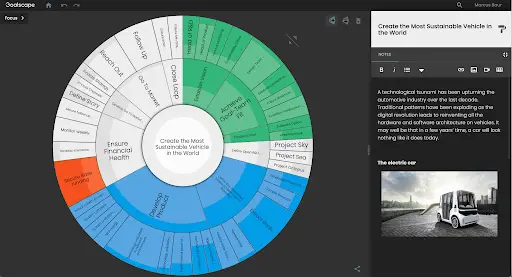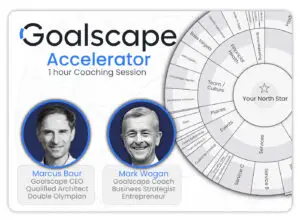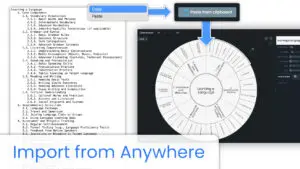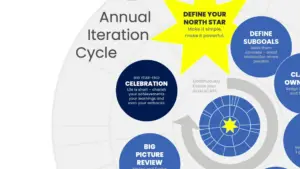The Key to Olympic Level Workplace Motivation
Business leaders recognize that motivation is key to success, yet most organizations are terrible at it! Globally, almost 90% of working people are not fully motivated, operating far below the motivation level of Olympic athletes – or even kids at play!*
Low motivation levels are depressing our modern world: they are a colossal waste of money – and, even worse, people’s valuable life years. It’s tragic! Why is it happening? And what can we do about it?
Lack of motivation thwarts top performance in organizations
Kids at play do not look for any payment.** The same is true for most people who strive for excellence in Olympic sports or the arts. Yet motivation levels are very high in these environments, despite the absence of big paychecks and bonuses. So, what is it that drives athletes or kids?
They have straightforward goals and experience constant joy over small successes. Be it completing a lego project, a good training session, or simply enjoying the powerful motivation of a strong team spirit.
The key to success lies in SMART Goal Setting – right?
Since I experienced the motivational power of goals during my Olympic career, I was convinced that the solution for top performance motivation must lie in smart, holistic goal setting and focused transparent communication.

That’s where I first developed the idea for Goalscape: an easy-to-use software and method for visual Goal Setting and team communication. You can find more information about it below.
For more than 15 years now, I have been working as a professional project and product manager. However, it turns out that implementing an effective goal strategy is much more complicated in companies and organizations than in the more goal-oriented world of sport. Doing one-on-one annual goal-setting sessions combined with informal performance reviews did not seem to unleash much motivation. On the contrary, they had the potential to depress motivation levels even further.
SMART Goal Setting drowns in the daily whirlwind
What was going on? Just setting goals did not seem good enough. Every student at a business school learns it. In every project management course, we are told to use SMART goals to be successful. (The acronym stands for Specific, Measurable, Achievable, Realistic, and Time-based).
I never really liked the acronym – or the way it was conveyed. It always seemed a bit abstract and know-it-all… “Just be SMART…”.
It seems so easy, but hardly anyone uses the SMART goal setting formula successfully inside businesses. The whirlwind of daily challenges often leaves too little room for the stiff, formulaic, and somewhat uninspiring SMART approach. And a goal – even a SMART goal – that is not understood by the team will not generate any motivational energy.
So why is FAST better for goal management?
A far better way to unlock motivation and maintain performance is to use the FAST model – an acronym and process created by Donald Sull, Senior Lecturer at the Massachusetts Institute of Technology. From the beginning – FAST stands for:
Frequently Discuss Goals, or they will be lost in the busyness of business.
Ambitious Goals motivate more than easy goals because we all like a good challenge: one that does not overwhelm us, yet asks the best of us. We also enjoy the applause we receive for notable achievements.
Specific Goals are better than fuzzy goals because we can only reach a goal that is clearly defined. Otherwise, we may never be satisfied and burn out, or we are too easily satisfied and get nothing done.
Transparent Goals win over hidden goals because with transparency, we open the door for help, a healthy dose of peer pressure, and we earn the respect of others.
Sull examined a large workplace dataset to find the qualities of the “Islands of the Motivated” that exist (after all) in the expansive sea of the business world.*** The four FAST attributes were the most dominant characteristics he could identify.
When we first saw FAST goals, we immediately realized that three of the four qualities were prominent ingredients of any Olympic campaign. Setting the goal of winning an Olympic medal is AMBITIOUS; it’s as SPECIFIC as it gets; and it’s TRANSPARENT to everyone involved.
But what about the first element? FREQUENTLY DISCUSS? Why do that?
When everyone understands the goal completely (fly to the moon and back, build a self-driving car, win a gold medal), not much discussion is required. Once a clear goal sits in the center of the action, its motivational energy can extend to the subgoals below.

In the business world though, vibrant, clear, easy-to-understand goals are often absent. And if present, they are poorly expressed or not genuinely shared by everyone. Many businesses set financial goals, but ‘increasing shareholder value’ does not seem to be a strong motivator. Trying to remedy the situation with some superficial vision that most people identify as lip service does not make a difference either. Just adding another purpose campaign or vision statement to the mix does not cut it – and may even backfire if employees see it as hypocritical.
It’s worth noting that the high motivation environments described above do not always have a ‘higher purpose’ at their center. Winning a gold medal is essentially void of any benefit to humanity (apart from celebrating and sharing the pure joy of being alive). That indicates that a strong purpose may not be as important as a clear understanding of what is to be achieved and how the achievement impacts everyone involved. When it comes to motivation, clarity is absolutely essential.
Why is finding specific, clear, inspirational goals so challenging for businesses?
A healthy business or organization provides essential services that deliver substantial customer value. So in the absence of a higher purpose, customer value can and should form the basis for strong intrinsic motivation. And turning customer value into team motivation is just a framing and communication challenge. This is where the F in FAST comes in – and why it comes first!
FAST Goal Setting fills the gaps in SMART Goal Setting
Goals must be Frequently discussed to ensure that they are understood and shared by the whole team or company. And this needs to happen on all levels! Only through frequent discussions can complex goals turn into motivating mental constructs.
Teams should write down their goals and carefully define priorities. Then they need to track their progress and celebrate their ‘wins’ frequently, just like a top-level sports team.
It really is that simple! Take the time to discuss and develop the goals to be achieved, and all the rest will follow.
Our goal at Goalscape is to offer the best solution to do just that: deliver Olympic Level motivation to any workplace in the world.

I recently returned from the Tokyo Olympics, where I witnessed again what unwavering motivation looks like – even in the face of a depressing pandemic. It reinforced my belief that we can unleash this type of motivation anywhere.
Goalscape – Visual Goal Setting Software
With Goalscape, goals and their subgoals are documented and structured easily using a rich visual format. Goalscape uses an intuitively understandable map that displays goals, priorities and progress in a dynamic and easy-to-read infographic. Motivation levels rise when teams frequently discuss their goals with Goalscape, ensuring they are ambitious, specific, and transparent to anyone.
Today, more than 50,000 people have visualized their goals with Goalscape, and the community is still growing rapidly. Among them are Olympic and world champions in many sports, regular folks who want to achieve their personal goals, and large corporations like VW Volkswagen or the space division of one of the biggest technology enterprises in the world. Goalscape helps all these people to align their goals visually, creating a motivating landscape of goals – hence Goalscape.

Using Goalscape for FAST goal setting is a game-changing method to foster Olympic level motivation. So try it with your team now – and see how easy it is to frequently discuss your goals and ideas with Goalscape.
References:
* According to a frequently conducted survey by the Gallup institute, only 13% of the Global workforce are “actively engaged”. The remaining employees are either “somewhat engaged” (pretending to be motivated), “disengaged” (not even pretending to be motivated) – and some are actually “actively disengaged” (these people are happy to harm their organization).
** You may enjoy the related Ted talk by Dan Ariely: Motivation at Work.
*** See the MIT Sloan Management Review here: With Goals, FAST Beats SMART.



